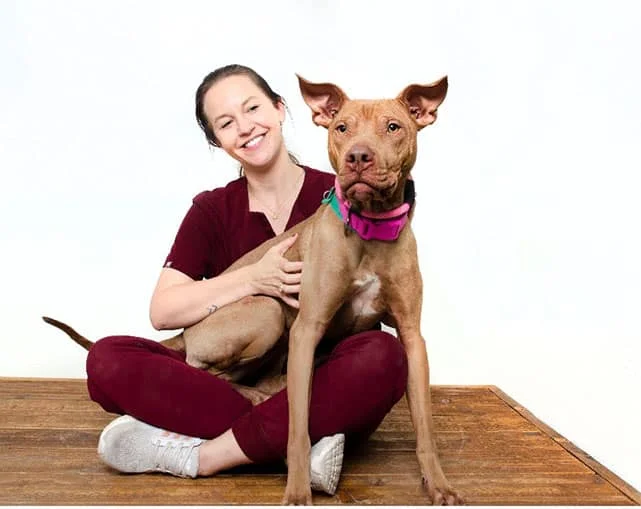
Behind every cloud, there’s a silver lining, and for our Foster department, the innovations they made during the Covid shutdown to keep placing pets in good foster homes were a silver lining. Little did anyone suspect at the time how successful these changes would be—so successful that now they’re everyday practices.
“During the Covid shut-down, we experienced an influx of animals and a strain on our kennel capacity,” said Stephanie Hunt, shelter veterinary services and foster manager.
The Foster team immediately rose to the challenge.
“We sent as many animals from the shelter into foster homes as we could. This lightened the load for staff walking dogs and cleaning onsite and opened kennels for incoming animals,” Stephanie said. “We also coordinated with Volunteer Services to onboard staff members as foster parents to widen our circle of foster homes.”
Still, it wasn’t enough. Foster made another major change.
“We tweaked and expanded our Foster Friends program to make it more efficient and allow more pets ready for adoption to stay in foster homes while they’re available on our website and waiting for their new families,” Stephanie said. (Foster Friends pets must be cleared medically and behaviorally, in contrast to most foster animals who aren’t ready for adoption yet.)
“Now that the shelter is completely reopened, we’re continuing to use Foster Friends. Any of our foster parents can take home a Foster Friends animal.”
Another major change the Foster team made during the shutdown was using Zoom to do virtual visits at potential foster homes. “This is one change due to Covid we’re excited to keep,” said Stephanie. “During the shutdown, we had a large amount of interest from the public who were available to foster but had never fostered. PACFA, which regulates rescues and shelters within Colorado, gave us temporary permission to perform virtual home inspections during the shutdown. Today, we’re continuing in-person inspections for new foster parents, but we’ll perform our yearly re-check virtually, saving a ton of staff time and gas.” (PACFA is the Pet Animal Care Facilities Act program in the Colorado Department of Agriculture.)
Despite seeing a decrease in the number of Covid cases in our community, the Foster team continues to have plenty to do. Foster parents care for more than 500 animals during summer and between 150 to 250 animals during winter. “From April through September, we see a huge increase in kittens who need fostering. Bottle babies, moms with nursing kittens and orphan kittens who aren’t healthy enough or old enough for adoption. During winter, we focus more on medical cats and dogs,” Stephanie said.
The League has around 450 foster homes, a number that fluctuates as new families join and experienced foster parents move away or retire.
Four foster care associates work in teams of two in four, 10-hour shifts to help foster parents care for their animals–Taylor Klein, Karissa Gerondale, Taylor Currie and Maya Kobacker. Their priority in the morning is to answer any emergency phone calls and emails, feed bottle babies and perform inventory for the animals in our foster kennels.
Throughout the day, these associates see vaccine appointments, send animals to foster homes and bring back animals for surgery and adoption. They also schedule follow up exams for sick foster animals, send vaccination reminders for boosters and specialized pleas for animals waiting at the shelter for foster placement. They work closely with the teams in Transfer, Intake, Behavior, Animal Care and Adoptions to ensure that our pets flow through the shelter as smoothly as possible.
Two of the League’s long-time foster parents, Jim Slater and Chris Hansen, encourage anyone interested in fostering to go through the onboarding process. Jim said, “The Foster department provides great training and support. I’d encourage people to consider medical fosters. There’s always a need, and you can choose what types of cases you’re willing to take on.”
“Give it a shot,” Chris said. “You might get addicted like I have and experience the very satisfying process of helping an animal in need. Or you might adopt your next best friend when you fail to take them back, which is terrific!”
“There are so many moving parts to Foster for our staff and foster parents. It takes a lot of time, communication, empathy, compassion and teamwork to care for our animals and ensure they get the attention and treatment they need,” Stephanie said.
“The happy endings are always the most satisfying part of shelter work, especially in Foster. When you see the really sick cat or dog heal and blossom while they’re in a foster home, when you see them move up for adoption and their true personalities fully shine through or you see a special needs animal find a perfect home with a foster parent who’s decided to adopt, it reminds you of why you come to work every day!”
